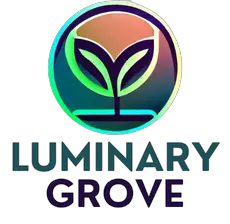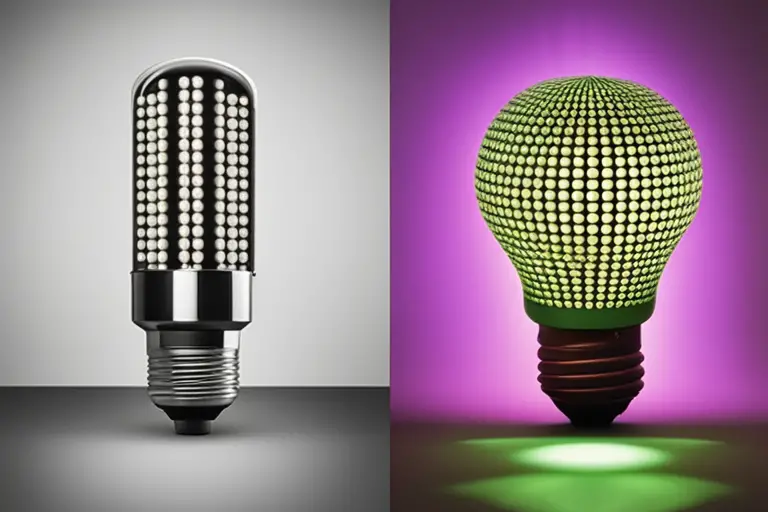LED grow lights have revolutionized indoor gardening and agriculture in recent years. As the technology continues to advance rapidly, LEDs are quickly becoming the preferred lighting solution for professional and hobbyist growers alike. In this article, we will explore some of the most exciting developments happening in the world of LED grow light technology and what the future may hold for this innovative lighting.
Introduction to LED Grow Lights
LED stands for light-emitting diode. LED grow lights utilize arrays of small semiconductors that emit light when electrical current is applied. Compared to traditional lighting like high-pressure sodium (HPS) and metal halide (MH) bulbs, LEDs are more energy efficient, generate less heat, have a longer lifespan, and allow for more customizable light spectrums.
The first LED grow lights emerged in the 1990s but were initially limited by high costs and low light intensity. Over the past decade, improvements in materials science and manufacturing have enabled LED performance to increase dramatically while costs have dropped significantly. Modern LED grow lights now match or outperform legacy lighting technologies in many metrics.
Benefits of LED Grow Lights
There are several key benefits that make LED grow lights advantageous for plant cultivation:
- Energy Efficiency – LEDs convert over 50% of input energy into usable light versus only about 30% efficiency for HPS/MH lighting. This equates to major electricity savings.
- Low Heat Output – LEDs run cooler than other types of grow lights, reducing HVAC costs and fire risks. Less heat also allows lights to be positioned closer to plants.
- Lifespan – Properly cooled LEDs can operate efficiently for 50,000 hours or more before degrading. This is 2-5 times longer than the lifespans of HPS/MH bulbs.
- Light Spectrum Control – LEDs can be tailored to emit specific light wavelengths optimized for different growth stages. This level of control is difficult to achieve with other lighting.
- Compact Size – High-intensity LED fixtures take up less space than bulky HPS/MH setups, increasing usable grow area.
- Durability – With no fragile glass or filaments, LEDs are more resistant to impacts and vibrations compared to traditional lighting.
- Low Maintenance – LED fixtures require less frequent bulb replacements and rewiring than HPS/MH systems.
- Directionality – Narrow-beam LEDs allow for more focused light delivery compared to omnidirectional HPS/MH bulbs.
With advantages across the board, it is clear why LED technology is becoming the top choice among growers. Now let’s look at some of the most exciting new developments and trends in LED grow lights.
Emerging Trends and Innovations
As LED manufacturing continues to scale up and R&D progresses, growers can expect major improvements in performance, features, and affordability. Here are some of the hottest areas of innovation in LED grow light technology:
Spectral Optimization
One of the greatest strengths of LEDs is the ability to precisely engineer the light spectrum. While HPS and MH lights emit wide ranges of wavelengths, LEDs can be tuned to deliver specific frequencies optimized for germination, vegetative growth, flowering, and fruiting.
Advances in spectral optimization are producing LED fixtures with spectra that perfectly match the photosynthetic peaks of chlorophyll A and chlorophyll B for maximum energy efficiency. Researchers are also experimenting with ultraviolet and far-red frequencies for potential growth benefits. Expect continued refinement of spectra for specialized applications.
Higher Photosynthetic Photon Efficacy
Photosynthetic photon efficacy (PPE) measures the amount of photosynthetically active radiation (PAR) delivered per watt of input energy. Higher PPE equals greater light energy available to plants per unit of electricity. While early LEDs had PPEs around 1.7, values have since climbed above 3.0 μmol/J for commercial fixtures. Top-tier LED manufacturers are now engineering lights with PPEs approaching 3.5, getting ever closer to the theoretical limits of the technology. These substantial efficacy gains allow indoor farms to produce more biomass with fewer lights.
Improved Thermal Management
One downside of LEDs is that their efficiency and lifespan are impacted by heat buildup. Manufacturers are attacking this issue through improved fixture designs that dissipate heat from the LED diodes and driver electronics. Heatsinks, thermal adhesives, and advanced cooling fans maintain optimal operating temperatures for peak performance. Higher-end lights may also employ thermoelectric coolers and liquid cooling systems. Better thermal regulation prevents LED degradation and unplanned downtime.
Higher Light Intensity
While the first LED grow lights maxed out at around 800 μmol/m2/s, intensities have climbed into the 1500+ μmol/m2/s range for top performers. Stronger light levels allow for faster vegetative growth and higher plant densities. To safely achieve these intensities, fixture designs must also diffuse the powerful point-source LEDs and minimize glare. Higher-powered LEDs must also be paired with sufficient thermal management to prevent overheating.
Expanded Light Distribution
Early LED grow lights had narrow coverage areas due to the directional nature of LEDs. Reflectors and lenses now allow for wider light dispersal, increasing coverage per fixture. Top-end lights may utilize dual-optics with separate lenses for broader distribution and focused hotspots. Adjustable light beams, rotating optics, and modular lighting panels provide further customization of coverage patterns. Wider dispersal improves yield uniformity while reducing the total number of units needed.
Improved Color Quality
The color rendering index (CRI) measures how accurately a light source displays colors compared to natural daylight. While high CRI is not critical for plant growth, it helps growers accurately monitor plant health and ripeness. New phosphor coatings and blue LEDs are enabling high-intensity LED lights with CRIs approaching 95, comparable to sunlight. This advancement could eventually allow indoor farms to implement computer vision and machine learning for automated crop inspection.
UV and IR Wavebands
Ultraviolet (UV) light below 400 nm and far-red/infrared (IR) above 700 nm were previously difficult to deliver at high intensities with LEDs. Technical improvements now enable UV and IR supplemental LEDs to be incorporated into fixtures. Research into UV’s fungicidal effects and IR’s morphogenesis influence will determine the value of these wavebands for cultivation. Targeted UV and IR treatments show promise for reducing pests and mold while improving plant architecture and phytochemical content.
Light Tuning and Timing
Sophisticated LED fixtures incorporate separate dimmable channels for customizing the light spectrum and intensity throughout each day. Light recipes can be tuned to the growth stage and photoperiod sensitivities of various crops. Automated real-time light tuning based on sensor data helps maintain daily light integral (DLI) targets and optimal growing conditions as the environment changes. Timed spectrum shifting and light period control can also direct plant morphology and influence flowering, flavor, and nutrition.
LED Grow Light Integration with IoT
The Internet of Things (IoT) is driving the evolution of smart greenhouses powered by interconnected sensors, automation, and data analytics. Integrating LED lighting systems into the IoT backbone enables remote monitoring, control, and programming of grow light operations. This allows greenhouses to leverage machine learning algorithms to dynamically optimize the light environment in response to sensor inputs. IoT integration will unlock the potential for fully autonomous LED light tuning.
Expanded Form Factors
Early LED grow lights were limited to bulky hanging fixtures. Continued miniaturization of LED components enables integration into slim, low-profile designs suitable for vertical farming and shelf systems. Flexible and wraparound LED panels facilitate lighting for irregular spaces and vertical surfaces. Waterproof LED strips open up lighting possibilities within hydroponic systems. Mobile LED carts allow supplemental lighting to be moved around as needed. The possibilities for custom LED configurations are multiplying rapidly.
What Does the Future Hold?
Industry experts forecast the LED grow light market expanding at over 15% CAGR through 2027, with indoor farming taking an ever-greater share of food production. This growth will be fueled by continued innovation in LED and nanotechnology that unlocks higher efficacies, intensities, and spectral precision year after year. Affordability improvements will also accelerate adoption among all scales of growers.
In the coming decades, LED manufacturer competition and commoditization will likely result in LED grow light setups achieving near-theoretical limits of 50% electricity conversion efficiencies with optimized spectra. Heat and glare issues will be resolved by advances in materials and optics. With energy and maintenance costs minimized, lighting will no longer be a limiting variable in indoor agriculture.
This technology trajectory will enable multi-level indoor farms to provide fresh, nutritious produce to urban populations year-round using renewable energy and vertical efficiencies. LEDs may even allow profitable crop growth in space and lunar habitats. Innovations in UV and infrared LEDs could also open up completely new growing possibilities we can’t yet envision.
One certainty is that LED grow lights will continue getting smarter. Integration of adaptive control systems, wireless connectivity, and machine learning will lead to automated lighting that continuously optimizes for growth metrics and electricity utilization. These dynamics will allow indoor farms to achieve previously unfathomable yields while driving down food costs and resource usage.
In closing, innovations in LED grow lighting appear certain to revolutionize the future of food production globally. With ongoing progress in areas of spectral design, thermal management, intensity, form factor and integration of technologies like IoT/AI, indoor farms optimized by tailored full-spectrum lighting regimes show enormous potential to sustainably nourish both urban and remote populations worldwide. Continued technological strides offer hope that clean, localized indoor agriculture may one day help address issues of food insecurity and environmental degradation at a scale not previously possible. The opportunities ahead for this nexus of LEDs and sustainable food systems seem limitless indeed.



Leave a Reply